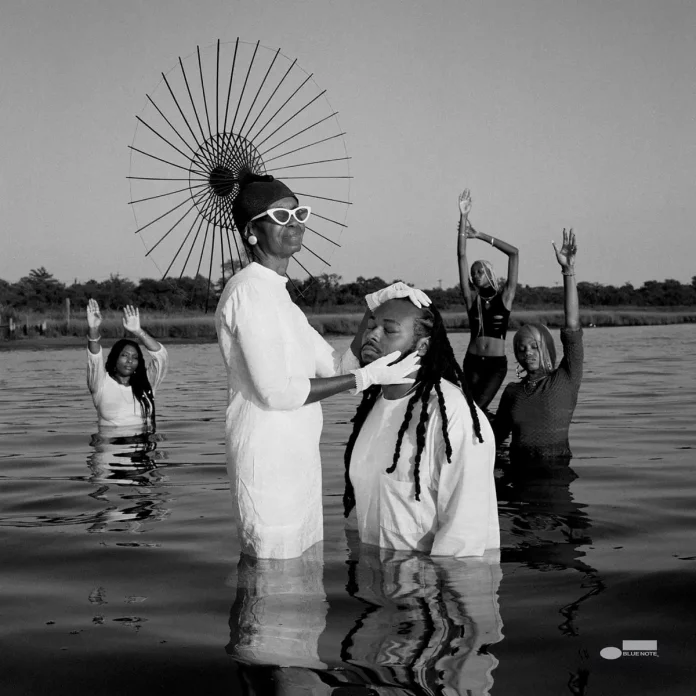Immanuel Wilkins is the Benjamin of the contemporary Blue Note “family”, which besides the 24-year-old alto saxophonist includes Joel Ross, Ambrose Akinmusire and Marquis Hill. Connecting black consciousness and spirituality, he debuted with the challenging Omega in 2020. Made clear not only by the music but also by the intriguing and dramatic sleeve and superbly written but pompous liner notes, Wilkins’ sophomore effort takes this aesthetic to the limit. The only qualm is that free-jazz anti-climaxes devalue The 7th Hand’s impressive “suite” of neo-progressive jazz.
Do you know that feeling? That you’re listening to a record and thinking: “If it gets any better than this, I’ll go out of my mind”? This feeling certainly applies to The 7th Hand. For all its postmodernity and digital format-length, it oozes vintage avant-leaning jazz. The series of six tracks suffice as “side A” and the excellence and variety are such that you can’t wait to hear the 28-minute-long Lift on “side B”. The programme starts with the sparkling post-bop of Emanation. Wilkins cuts loose and pianist Micah Thomas, a dominant presence throughout, rivals the leader as far as wild diversity is concerned.
Don’t Break (featuring African percussion), Fugitive Ritual and Selah are founded on vivid and melancholic threads, the unifying presence being Wilkins’ restrained lyricism and simultaneously wistful and intense tone. “Less is more” also marks Shadow, a deliciously smoky mix of Monk and Henry Mancini. This way, Wilkins (the stark flute-led Witness is based on a couple of evocative dark-blue chords, Lighthouse presents an excellent alternate piece of post-bop) has created a layered palette of contrasts, a convincing reflection of the ideas about the similarities of jazz and fashion that the trendy saxophonist discussed with yours truly approximately two years ago: “The Italian fashion expression of ‘sprezzatura’ describes the intuitive merging of haute couture and streetwear and the artful reshuffle of opposing elements as sleaze and elegance.”
Apparently realising that mainstream jazz doesn’t have the monopoly on tradition, Wilkins aims for a grandiose cathartic experience. His reenactment of Ascension and Free Jazz shares Coltrane’s and Coleman’s ruthless finality, veering from barrages of exalted piano to grumbling or screeching or screaming alto, the dust settling only to introduce a near-apocalyptic climax that emphasises Wilkins’ exceptional command of his instrument. Lift’s provocative statements fall within the boundaries of artistic freedom but also raise the questions of how much the listener can take and if the placing and internal drifts of Lift are in sync with the spontaneous logic of sprezzatura.
Discography
Emanation; Don’t Break; Fugitive Ritual, Selah; Shadow; Witness; Lighthouse; Lift (58.53)
Wilkins (as); Micah Thomas (p); Daryl Johns (b); Kweku Sumbry (d); Farafina Kan Percussion Ensemble (pc, #2); Elena Pinderhughes (f, #5 & 6). New York, 2021.
Blue Note 00602438326501















